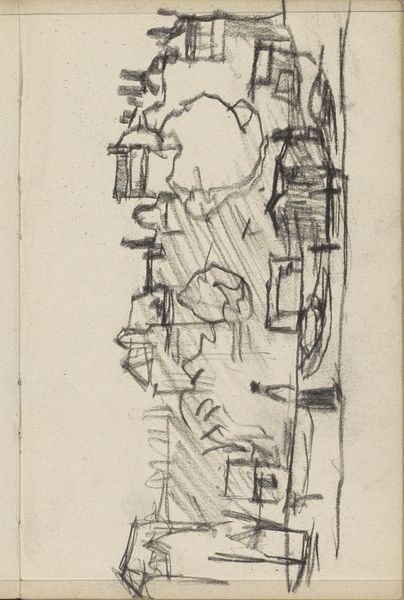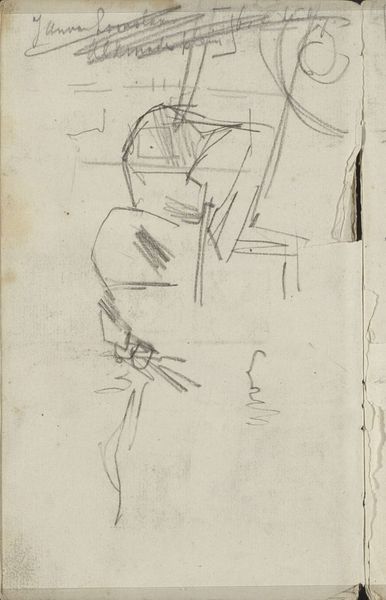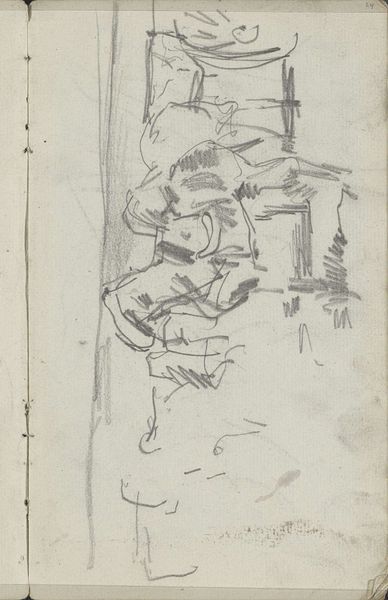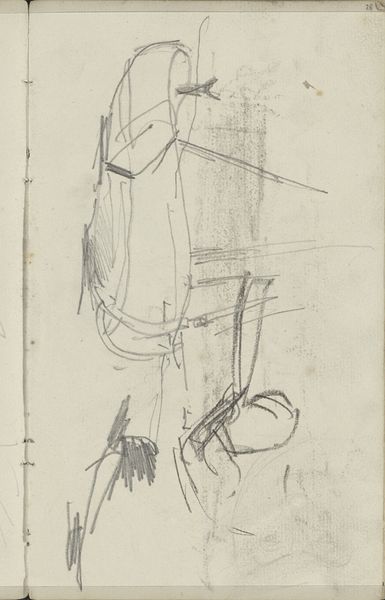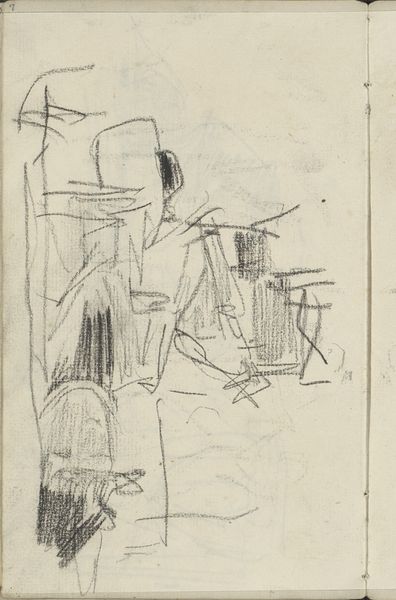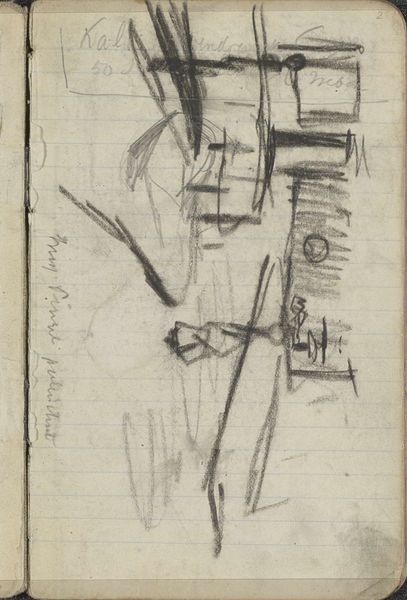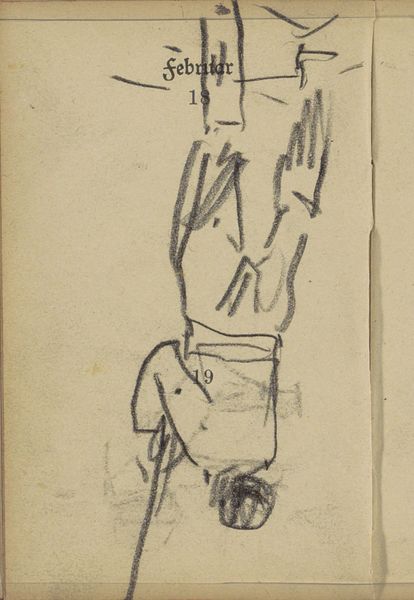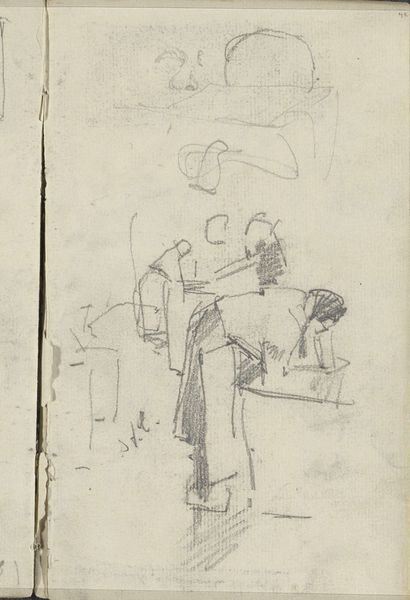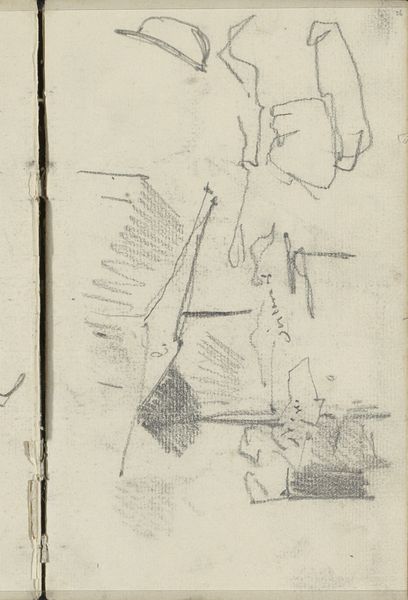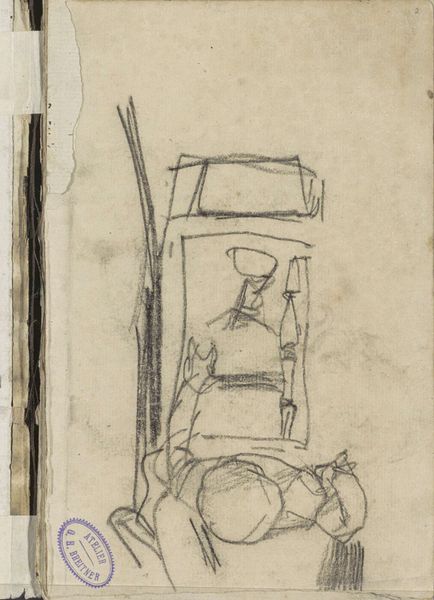
Gezicht in Amsterdam, mogelijk de Eilandskerk op Bickerseiland 1886 - 1923
0:00
0:00
georgehendrikbreitner
Rijksmuseum
Copyright: Rijks Museum: Open Domain
Curator: Well, here we have George Hendrik Breitner's "View in Amsterdam, possibly the Eilandskerk on Bickerseiland," a charcoal drawing on paper, likely created sometime between 1886 and 1923. Editor: There's a wonderful immediacy to it, isn't there? Raw, almost. It feels like a fleeting impression captured in charcoal. The smudged lines create a dreamlike quality, evoking the gritty reality of Amsterdam at that time. Curator: Indeed, Breitner was very much embedded within that gritty reality, documenting the everyday life of Amsterdam, particularly the working class, and in doing so providing social commentary through observation. The Eilandskerk itself stands as a landmark of social and religious importance in that specific area. Editor: Looking closer at that central church tower, I see how heavily he's rendered the windows and architectural details. I read this almost like a symbol of resilience, juxtaposed against the more blurred and indistinct elements around it, suggesting a kind of stability. Do you find connections with other visual languages in his composition here? Curator: It's an interesting reading, I appreciate it! From the symbolic angle, in some respects it reminds of 17th century Dutch masters—think about the prevalence of church towers in cityscapes. There are some immediate similarities. More formally, its connection to Impressionism can be detected through its rough, evocative rendering, though Breitner’s own direct approach distances him from the more lyrical aspects of that movement. The charcoal on paper gives us this unfinished rawness you described. Editor: The materiality definitely contributes to that. Breitner isn't concerned with idealized beauty here. It feels documentary in a way, a raw capture of the urban environment. How would people respond at the time to his art? Curator: Initially there were varied reactions. While some praised his commitment to realism, especially concerning the working class, others found his subjects and techniques unrefined. He was a bit ahead of his time in focusing on such ordinary scenes. It wasn’t universally accepted to represent Amsterdam without any varnish. Editor: Looking at it now, it feels so familiar—almost like looking through someone’s sketchbook. It certainly resonates with a contemporary sensibility of unmediated observation. Curator: Yes, precisely! It makes you wonder about the untold stories woven into Amsterdam’s urban fabric, stories Breitner managed to glimpse and share through his distinct visual style. Editor: I agree. The power in this kind of seemingly minor sketch resides precisely in its capability to whisper profound ideas to any receptive soul across different ages and cultural contexts.
Comments
No comments
Be the first to comment and join the conversation on the ultimate creative platform.
